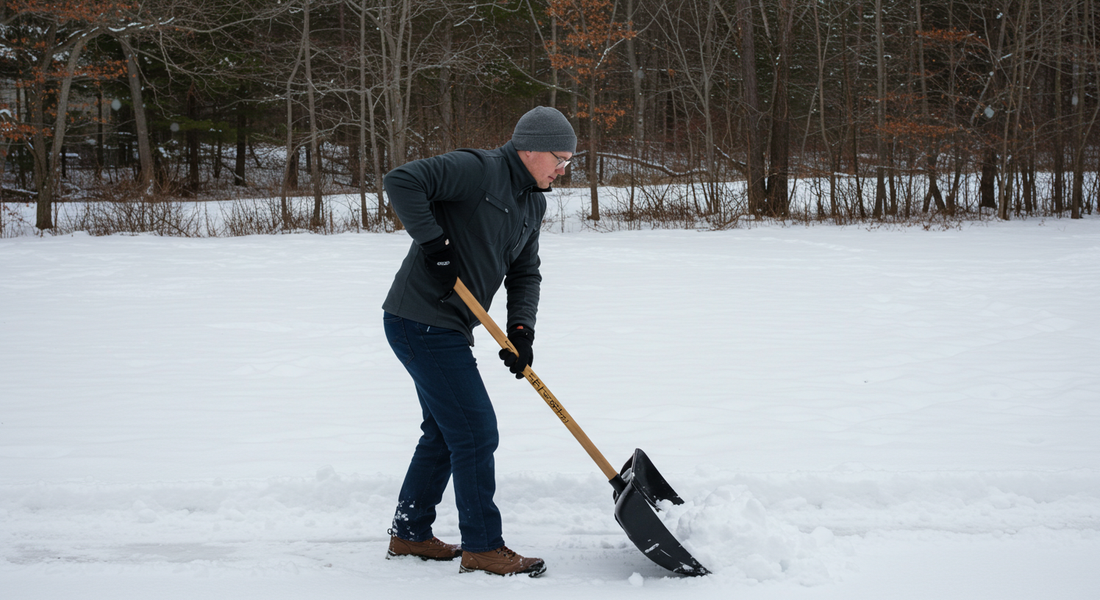
Snow Removal 101: A Guide to the Best Tools and Techniques
Share
The first snowflake of the season is a beautiful sight, but it's also a signal that winter weather is here to stay. When the forecast calls for a significant snowfall, the worst time to think about your removal strategy is when you're already ankle-deep in powder.
The importance of having a solid snow removal plan cannot be overstated; it’s about safety, accessibility, and preventing the back-breaking work that comes with procrastination. This guide provides an overview of the essential snow removal tools and safety measures to help you tackle winter head-on.
Your Arsenal: Choosing the Right Tools
Having the right equipment is half the battle. Your needs will vary based on your climate, the size of your property, and your physical ability.
-
The Shovel: The classic snow shovel has evolved. An ergonomic shovel with a bent handle can significantly reduce back strain. Consider having two types: a pusher shovel with a wide blade, perfect for clearing light, fluffy snow with a pushing motion, and a scoop shovel for lifting and throwing heavier, wetter snow.
-
The Snow Blower: For those who get significant snowfall, a snow blower is a game-changer. The debate over the best snow blower often comes down to your needs. Single-stage models are lightweight, usually electric, and ideal for smaller driveways with moderate snowfall. Two-stage blowers (gas or electric) are more powerful, with an auger that chews through heavy, compacted snow and ice, making them suitable for larger areas and deeper drifts.
-
Ice Melt and Salt: After clearing the bulk of the snow, treating icy patches is crucial for safety. However, traditional rock salt can be harmful to pets' paws, plants, and concrete. Look for an ice melt pet safe formula, which often uses calcium magnesium acetate or similar compounds that are less corrosive and safer for your furry friends and landscaping.

The Right Technique: How to Shovel Without Breaking Your Back
Shoveling is a strenuous cardiovascular activity. Knowing how to shovel snow safely can prevent serious injury.
-
Warm-Up: Before you even pick up the shovel, do a few minutes of light stretching. Warm up your muscles, especially your back, shoulders, and legs.
-
The "Push, Don't Lift" Method: Whenever possible, push the snow to the side rather than lifting it. This uses your body's momentum and puts far less strain on your back.
-
Proper Posture: When you do have to lift, bend at your knees, not your waist. Keep your back straight, engage your core muscles, and lift with your legs. Keep your hands spaced out on the shovel handle for better leverage—one hand close to the blade and the other at the end of the handle.

Strategic Snow Removal
Working smarter, not harder, is the key to efficient snow removal.
-
When to Start: For light snowfalls, it's fine to wait until the storm is over. For heavy, multi-day storms, it's often easier to do multiple clearings of a few inches at a time rather than waiting to tackle a foot or more of heavy, compacted snow.
-
Where to Pile the Snow: Don't just create giant snowbanks at the end of your driveway for the plow to hit. Pile snow on the right side of your driveway (when facing the street) to minimize the amount the public plow pushes back. Also, choose spots that get good sun exposure for optimal melting and won't cause drainage issues near your home's foundation.
-
Clear Critical Areas: Before you even start the main driveway, make sure to clear snow away from essential areas like furnace vents, exhaust pipes, and utility meters to prevent dangerous blockages.
Conclusion: A Safe and Clear Driveway All Winter Long
Facing a winter storm with the right tools, techniques, and a clear plan transforms a daunting task into a manageable one. By preparing your arsenal, focusing on safe body mechanics, and clearing snow strategically, you can ensure a safe and accessible property
